The Mayor “Of the Streets”, Between Past and Present
Luigi De Magistris’ trip to New York kicked off nicely on June 3rd with Luigi de Magistris visiting Manhattan’s historic Little Italy, which also inspired a long New York Times article. We all know how hard it is for any foreign personality, who isn’t a movie star or a president visiting the UN, to get the attention of the iconic American newspaper. But the mayor of Naples, immediately met them: a young journalist and a photographer, in Little Italy, his first stop after stepping off the plane.
Meeting the Italian American Community.
The context certainly had something to do with it: very few Italian politicians go visit the historical sites of Italian immigration with such respect and sincere interest.
It’s true that the Times' article wasn’t free of superficial nods to antiquated stereotypes that drive the Italian American community crazy, but it’s also true that the paper caught one of the trip’s most important purposes: to strengthen a tie between two realities – that of Naples and that of the Italian community in America – both wishing to free themselves from their common fate of being too often associated with the negative “pizza and mafia” stereotype.
This theme is discussed in a video produced by the City of Naples that de Magistris brought with him “Naples, Not a Common Place” Luigi de Magistris explained it upon his arrival, as he took part in a crowded reception organized by Monsignor Donald Sakano, pastor of St. Patrick’s Old Cathedral.
He was accompanied by the Neapolitan priest, theologian and essayist Gennaro Matino, who is working alongside Sakano on a spiritual and cultural partnership between their two parishes, which as of next year will lead to a series of events between Naples and New York.
The neighborhood welcomed the Mayor enthusiastically during his informal stroll, during which he stopped by historical food stores (Alleva and DiPalo), shook various hands and let people take many selfies with himself, on his way to the Most Precious Blood Church, also managed by Monsignor Sakano, the national temple of San Gennaro in the US and heart of the old community of mainly Neapolitan and Southern Italian origins.
Among the participants were also the leader of the neighboring Chinese community of Chinatown and Victor Papa, the president of the Two Bridges Neighborhood Council who is in charge of celebrating the cultural diversity of the area, and of promoting the coexistence of the Italian and Chinese communities.
An important message echoing another main theme of De Magistris’ visit: depicting Naples and New York as examples of inclusive and “mixed” cities, welcoming places, accepting of migrants, centers of cohabitation between peoples and cultures.
But the dialogue with the Italian community went even further when the mayor of Naples visited another “Little Italy”, even more neglected during typical official visits, that of the Bronx.
Guided by Nicola Trombetta, the highly popular president of the American Campania Federation, De Magistris was engulfed by the crowd of the historical Arthur Avenue Market, where the tireless David Greco, a representative of Italy in the area and the owner of Mike’s Deli even taught him how to make mozzarella!
Amid an enthusiastic crowd and in front of the cameras of local TV stations, the mayor washed his hands, rolled up his sleeves, and followed the instructions of David Greco, working the dough into shape.
Once tasted and certified, the mayor’s mozzarella was distributed to those present, who savored it like a delicacy.
After this came the walk on Arthur Avenue and Belmont Avenue (“New York’s true Little Italy”, as its inhabitants like to call it, not without a hint of resentment towards the better known one in Manhattan): alongside stores, restaurants and artisan shops, crowned by moments of joy and the poignant memories of the old Neapolitan immigrants. Once again, they reached a church, Our Lady of Mt. Carmel to meet the young pastor Jonathan Morris, who, wearing jeans and a t-shirt, was busy fixing a wall of his church (also known as a TV commentator for important networks such as Fox and CNN, Morris was Mel Gibson’s theological advisor for The Passion of the Christ movie and is the campus minister at Columbia University).
Finally, they lunch at San Gennaro complete with real ragù and many projects.
An ideal follow-up to this trip among migrants, the visit to the famous entrance port of Ellis Island, nowadays an extraordinary museum, led by Prof. Robert Viscusi of Brooklyn College (CUNY), an essayist, writer, poet, and an expert in Italian immigration in the US.
Also valuable was the guidance of the ranger of Italian origins, Anthony D’Antonio, who presented the mayor and his team with an extremely accurate simulation. In front of the unsuspecting public of visitors and tourists, De Magistris impersonated the president of a commission in charge of evaluating the case of Frank, a Canadian typographer who in 1906 was denied entrance due to “psychological disorders” (actually guilty of being a woman attempting to immigrate dressed as a man, due to the problems she would have faced as a woman in American business).
Half-jokingly, “the president of the commission” – highlighting the inclusiveness of his migration policy as the mayor of Naples – decided to admit Frank into the US (the ranger then confided that that’s how the case was actually resolved a hundred years ago).
Professor Viscusi thus rewarded him with a copy of his poem Ellis Island. recently translated in Italian.
Into the world of culture
In the world of Italian culture in New York welcomed de Magistris with two conferences, so crowded that in both cases they had to open an extra room connected to the main one through a closed circuit TV. The first was held at the John D. Calandra Italian American Institute (CUNY), the largest American university institute entirely dedicated to the experience of Italian.
Here the mayor of Naples was the guest of honor of scholarly event titled “L’oro di Napoli” (the gold of Naples), whose regulators included the dean of Calandra, Anthony Tamburri, and professors Robert Viscusi (Brooklyn college), Fred Gardaphe (Queens College), Stanislao Pugliese (Hofstra University) and Gennaro Matino (Università degli Studi Suor Orsola Benincasa, Naples). It was an occasion to discuss “high culture”.
The same message brought to the “people” of the Little Italies: “Crossed by many peoples throughout its history – conquered by Arabs and Spaniards, Frenchmen and… Americans – Naples has never been and never will be a bigoted and racist city”.
And if Italy is behind many countries regarding migration policies, Naples is actually ahead – underlined the mayor, anticipating a topic which he will then discuss in detail also with mayor Bill de Blasio: The initiative by the county of Naples to offer “honorary citizenship” to immigrants and their children, allowing them access to services that, according to his administration, are part of the inalienable rights guaranteed by Article 3 of the Italian Constitution, which promotes equality among humans. Because, he concluded to the sound of the audience’s applause, with modern globalization “money and merchandize can travel from one place to another and cross all boundaries – but this right is denied to humans.”
The following day, at the Casa Italiana Zerilli-Marimò, the discussion continued as part of a series of encounters titled “Eppur si muove”, dedicated to the political and social changes of Italy today. Welcomed to the sound of “Napule è” by Pino Daniele, interviewed by the Director of the Casa prof. Stefano Albertini and the editor-in-chief of i-Italy Letizia Airos, de Magistris discussed his experience as a magistrate having taken part in important investigations against the mafias and corruption, then as a member of the European Parliament and finally as the mayor of his city.
Later, overwhelmed by the questions from the audience who refused to leave, he answered everyone discussing his experience as “mayor of the streets”, his passion for participatory democracy, his vision of Naples and New York, so distant geographically but paradoxically so close, connected by the inclusive conception of diversity – not as a threat, but as a resource.
“Naples isn’t the city of fires, it’s the city of Fire” he exclaimed. “A city with a fire burning inside, of love, passion, and the desire for redemption. A fire that has crossed the ocean.”
Not only universities, but schools as well.
De Magistris visited another Italian institution in New York, the Scuola d’Italia “Guglielmo Marconi” – the only school offering, from primary to high school, an entirely bilingual (Italian and English) curriculum, certified both in Italy and in the US.
Greeted by the president of the board Steve Acunto and the principal Maria Palandra, the mayor of Naples spoke to a large group of parents, then addressed the kids, sitting down on the floor with him to play and answer many questions about “what does a mayor do” – just as he often does in his own city. Under the dynamic direction of the Scuola d’Italia, now in great expansion, potential exchanges with Neapolitan schools were brought up.
Promoting Naples
Many were the institutional meetings and encounters with entrepreneurs and professionals from various sectors to promote Naples using the most diverse aspects: tourist destination, movie set, location for weddings and honeymoons, but also a city where Neapolitans who found success abroad could return to and invest in. De Magistris discussed these themes with the Consul General Natalia Quintavalle, with the director of ENIT North America Eugenio Magnani, with the Italian Trade Agency’s Director Maurizio Forte and Deputy Director Romano Baruzzi. With everyone, in different forms, the mayor reiterated the intention of his Administration to act as a facilitator for those who want to develop business in the area.
Two meetings seemed particularly productive. The first was at the gourmet megastore Eataly on Fifth Avenue, directed towards tour operators specializing in trips to Italy and sponsored by the airline Meridiana (with direct flights Naples-New York during the summer) and the association “Pizza Village”, that for years has organized the eponymous event in Naples in September. Here the mayor presented the “Naples package” from his Department of Tourism and, once again, the beautiful video “Napoli, Not A Commonplace”.
The second meeting of great interest in the area of promotion was organized by the Italy-America Chamber of Commerce at the elegant headquarters of the Buccellati jewelry store on Madison Avenue, where de Magistris met the President of the Chamber of Commerce Alberto Milani along with many entrepreneurs, several of them Neapolitan, working in New York in different sectors from real estate to clothing, from food and wine to distribution. And here too, new ideas were born that will be developed in the coming months.
Always following this promotional vein, de Magistris also participated in the inaugural lunch of Open Roads, the Italian film festival of the Film Society of Lincoln Center directed by Antonio Monda, now in its 14th edition.
Here, in the presence of many of the Italian directors involved (including Francesca Archibugi, Duccio Chiarini, Eleonora Danco, Cristina Comencini, Ivano de Matteo and others), the mayor announced the establishment of the Office of Cinema of the City of Naples, to facilitate the work of film productions that intend to choose Naples as their set.
The meetings with individual entrepreneurs tied to Naples and its metropolitan area were numerous and very diverse: from the aperitif at the American headquarters of the famous tailor Kiton, with President Antonio Paone and manager Luca Infantino who invited a select group of friends for the occasion, to the lunch offered by Rossopomodoro to the mayor, the tour operators and the press in their new location in the Village.
A special dinner was also enjoyed at the restaurant Ribalta, where the owner Rosario Procino and his partner-chef Pasquale Cozzolino summoned the members of the Club Napoli of New York to greet their mayor.
Procino also took the opportunity to deliver to don Gennaro Matino a donation from Club Napoli to benefit a charity organization in Naples, the association”Medici di Strada,” (Street Doctors) as testimony to the willingness of Neapolitans abroad to help their city.
But de Magistris also visited tiny family businesses like the “Panineria Italiana” of the brothers Mario and Giuseppe Pesce, in Greenwich Village, as well as the elegant, recently-opened The Vicoletto, a delicious restaurant founded by entrepreneurs Giovanni Colavita (a young entrepreneur from Molise, president of Colavita USA) and Jerry Turci (a Neapolitan who immigrated 40 years ago, today the owner of a large food market across the river in New Jersey). And always with the same message of openness and collaboration towards those who come to invest in Naples, but also those who came from Naples to New York to discover America and yet remain tied to their origins.
Naples and New York, cities of peace on the 41st parallel
As the reader can see, there was a clear common thread that tied together the different aspects of this trip, that of the flows of migration, in the past as in the present. And certainly in the future, due to a globalization that must be addressed culturally and governed politically in order to exploit not only its economic and financial aspects, but also its human and civil potentialities.
This is a theme that, in the view of de Magistris, ties Naples to the world—on the one hand, through the Mediterranean sea of which Naples is the center, and on the other through the 41st parallel that, across the Atlantic Ocean, connects Naples and New York. For a week, the mayor brought this theme in the streets and in the universities, amidst the people, amidst the entrepreneurs, amidst the intellectuals. But he also brought it to more diverse institutions and administrations, from the UN to the City of New York.
In the headquarters of the Permanent Mission of Italy to the UN, de Magistris met Ambassador Sebastiano Cardi and his deputy Inigo Lambertini (who, incidentally, originates from Campania).
The conversation focused on the strategic role of cities in the global world and in particular the role that Naples intends to play to promote the development of a peaceful Mediterranean bgased on shared citizenship rights.
Global issues like the wave of migrations in Europe, the peace in the Middle East, cannot but pass through the cultural and political mediation of the big cities that overlook this sea, from north to south, from east to west. Ambassador Cardi said he was willing to engage with the City of Naples in a joint effort to work on these issues, in particular on supporting inclusive policies in European cities and the strategic role that Naples—a city of peace and integration par excellence—can play in this area.
This theme re-emerged with strength in what was perhaps the most important meeting the mayor of Naples had during this trip—that with the mayor of New York, the Italian-American Bill de Blasio. An hour-long conversation of high political profile and great human affinity, held in the presence of their respective delegations and then continued in private at de Blasio’s residence, where de Magistris was invited for an unscheduled drink. The two agreed on just about everything and in the coming months, will put in place a series of joint initiatives.
The City of New York will offer its support to the projects of the City of Naples to encourage touristic and cultural “reverse migrations”whereby New Yorkers from Naples and Campania could visit their ancestrgal homeland to rediscover their roots.
But also, and most importantly, the two mayors will collaborate on an in-depth discussion regarding their policies of acceptance and inclusion of migrants, with the same certainty that the influence and exchange between different cultures is a source of wealth and not a reason for fear.
De Blasio and de Magistris also compared some concrete initiatives already put in place in their respective cities, like the new identity card that the City of New York has offered all residents, including “without papers” immigrants, compared to the Neapolitan initiative to offer “honorary citizenship” to all immigrants which, as de Magistris had already said at the Calandra Institute’s conference, would allow access to essential services on the basis of shared citizenship rights.
Bill de Blasio and Luigi de Magistris have promised each other that they will collaborate effectively on these issue making Naples and New York the promoters of a world coalition of cities committed to policies designed to combat inequality and to promote human, social, and cultural integration.






























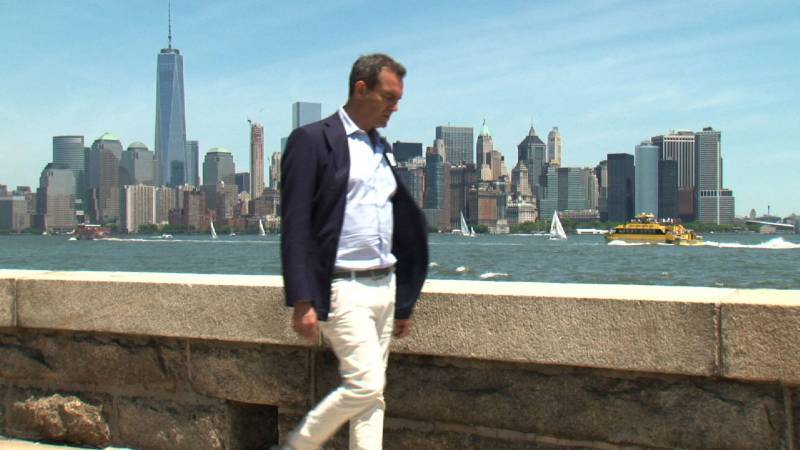
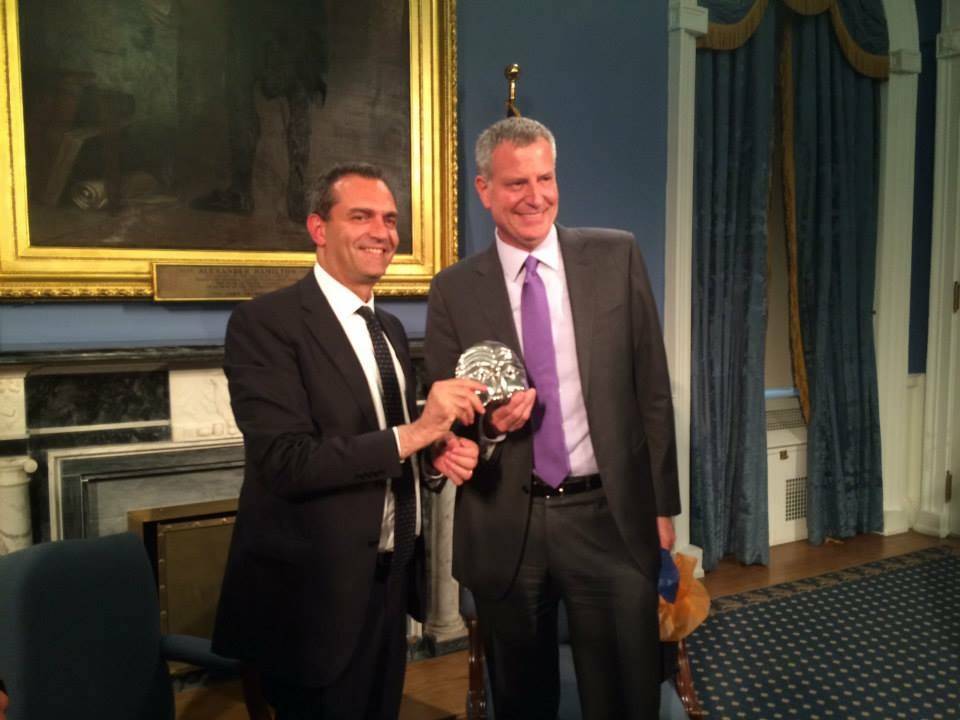


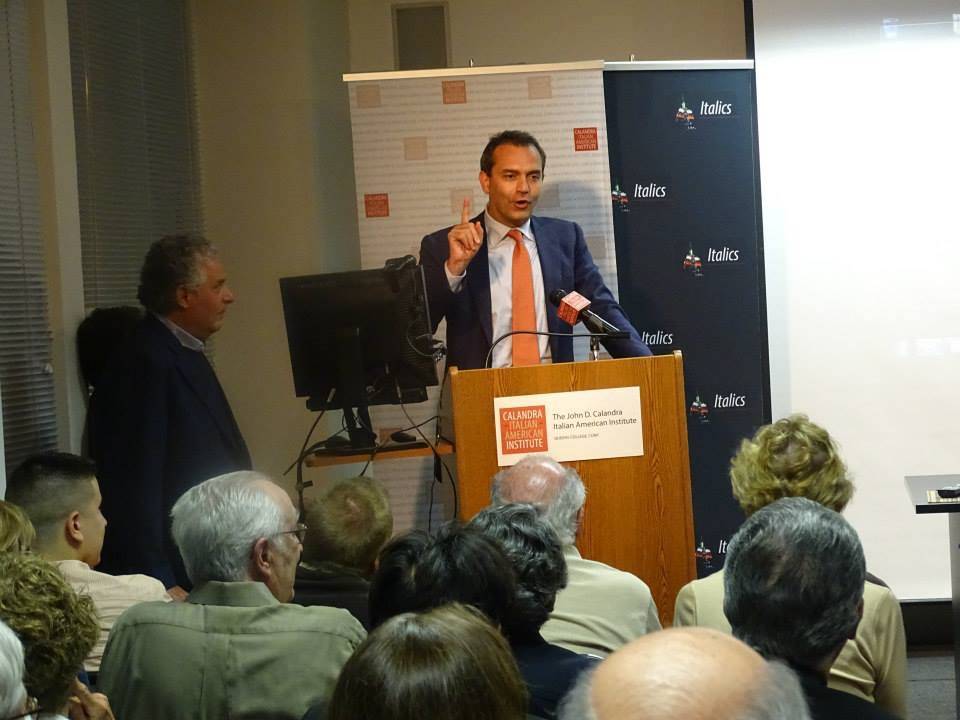
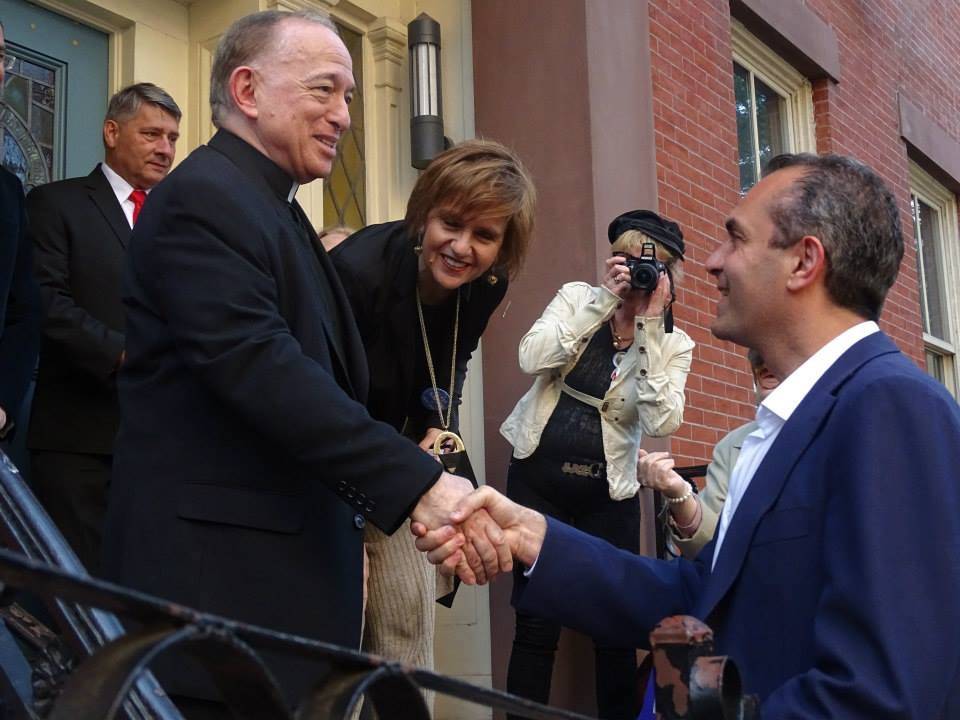


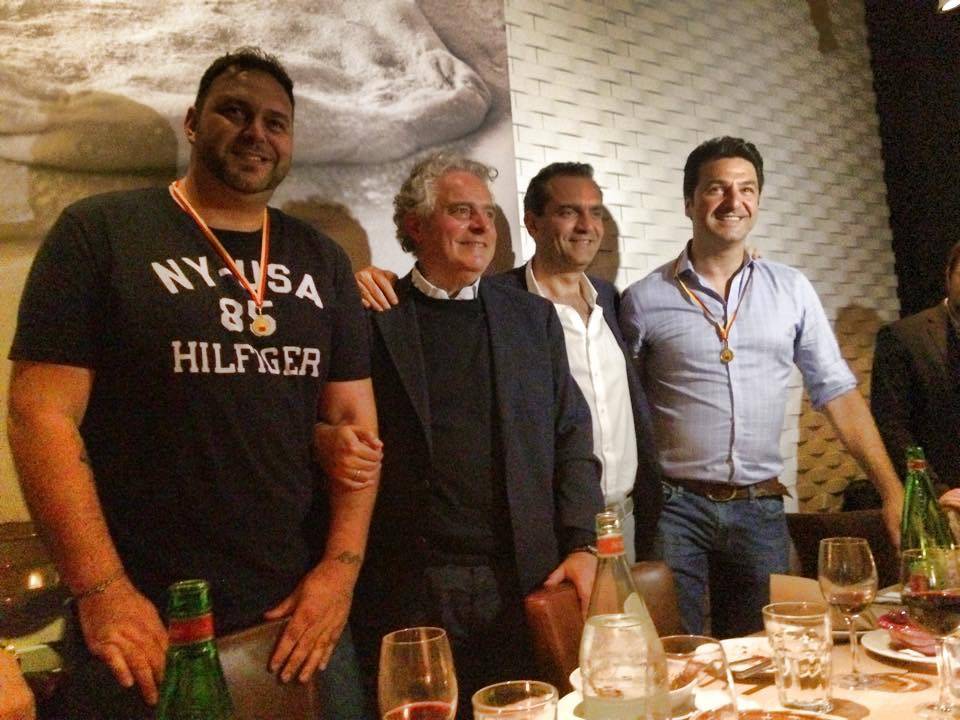
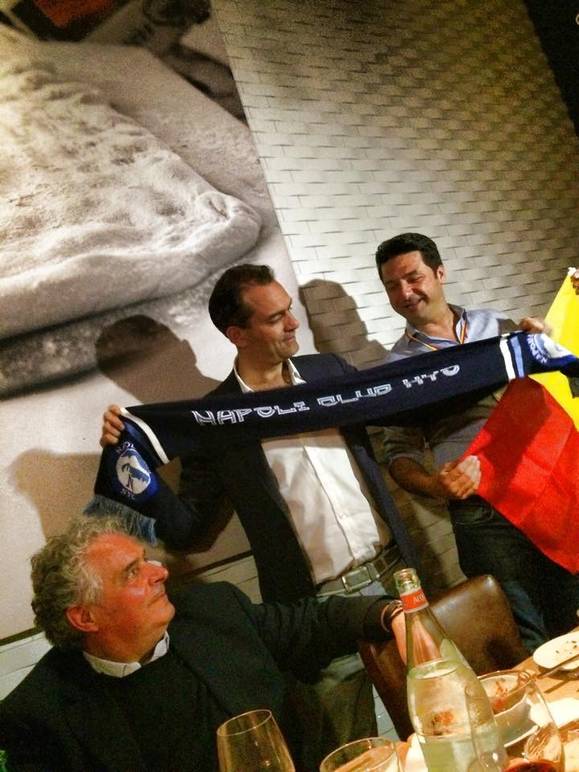
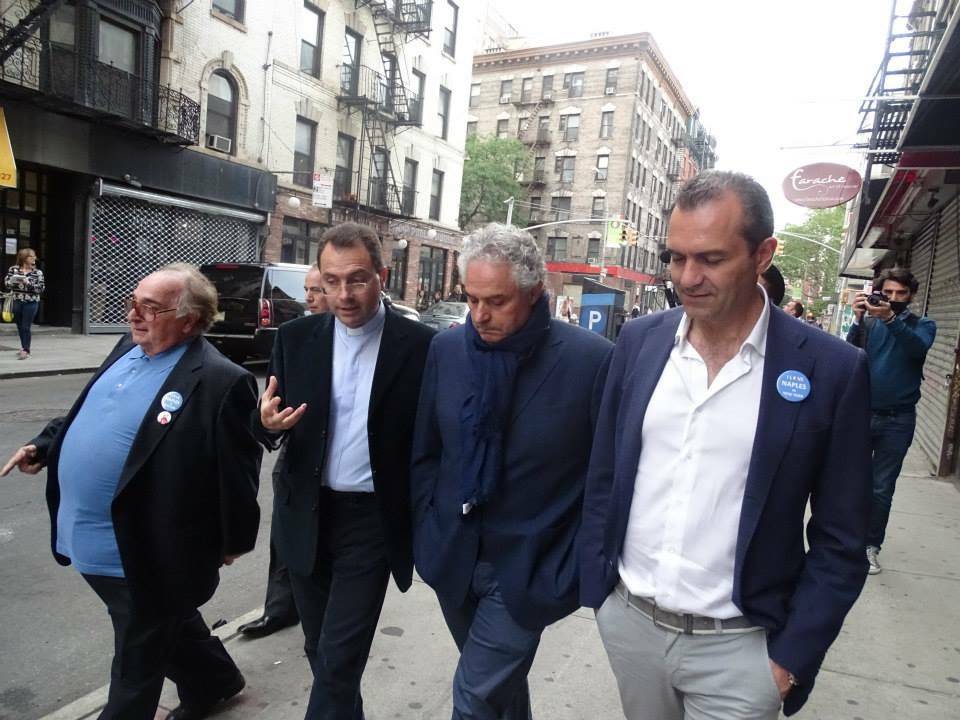

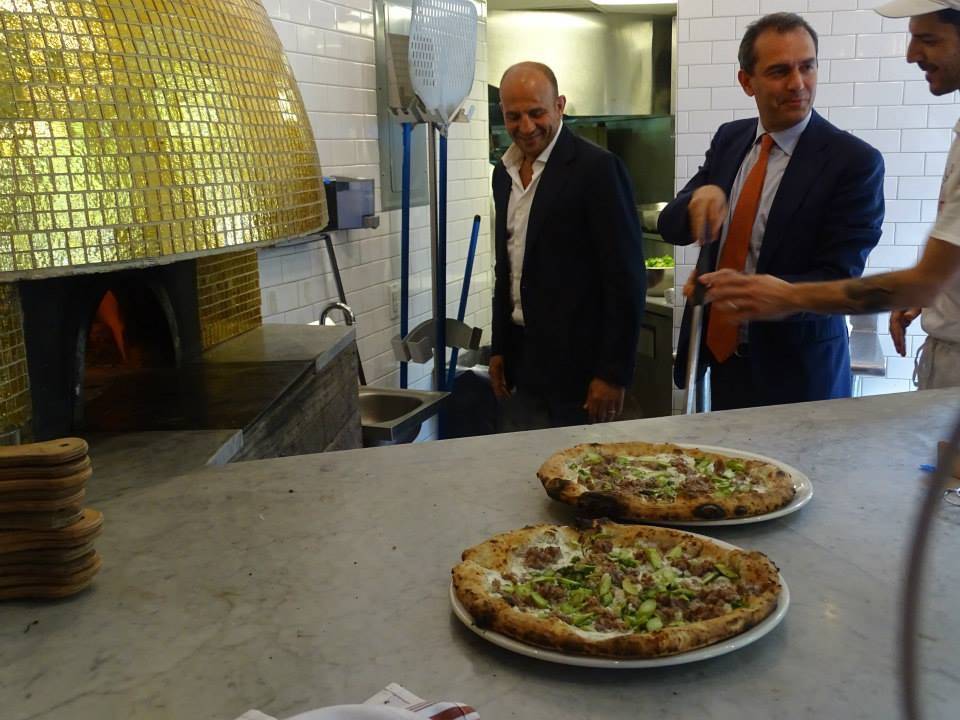
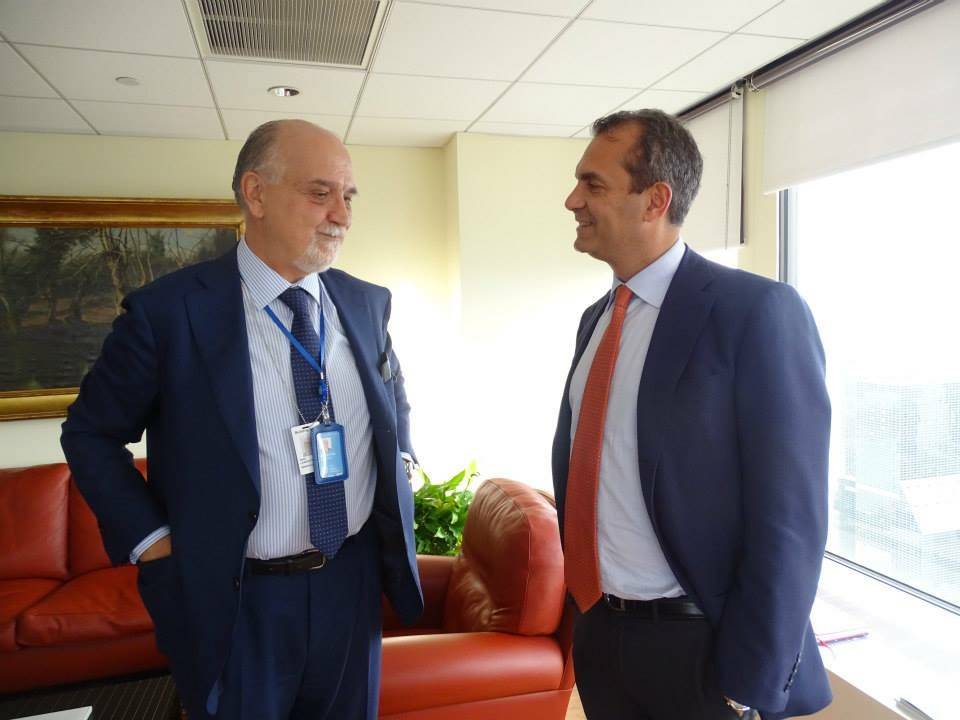





i-Italy
Facebook
Google+
This work may not be reproduced, in whole or in part, without prior written permission.
Questo lavoro non può essere riprodotto, in tutto o in parte, senza permesso scritto.